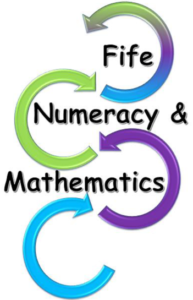Fife’s Approach: Developing a Conceptual Understanding in Numeracy
Sitting within Fife’s wider Teaching and Learning strategy, the mathematical pedagogical position of Fife, backed up by years of Worldwide research, is that conceptual understanding must come before procedural learning. Conceptual understanding is knowing more than isolated facts and methods. The successful learner understands mathematical ideas, and has the ability to transfer their knowledge into new situations while applying and adapting it to new contexts.
Further information on Fife’s approach can be found in the Fife Numeracy Position Paper (2018)
Conceptual Knowledge is:
- “Learning mathematics with understanding, actively building new knowledge from
experience and prior knowledge.” Principles and Standards for School Mathematics (2000) - “Ideas, relationships, connections, or having a ‘sense’ of something.”
Barr, Doyle et. Al. (2003) - “Learning that involves understanding and interpreting concepts and the relationships between concepts.” Arslan (2010)
- “…learning in which students take the reins of their own learning and are able to apply their thinking to new contexts and situations.” Hattie (2017)

